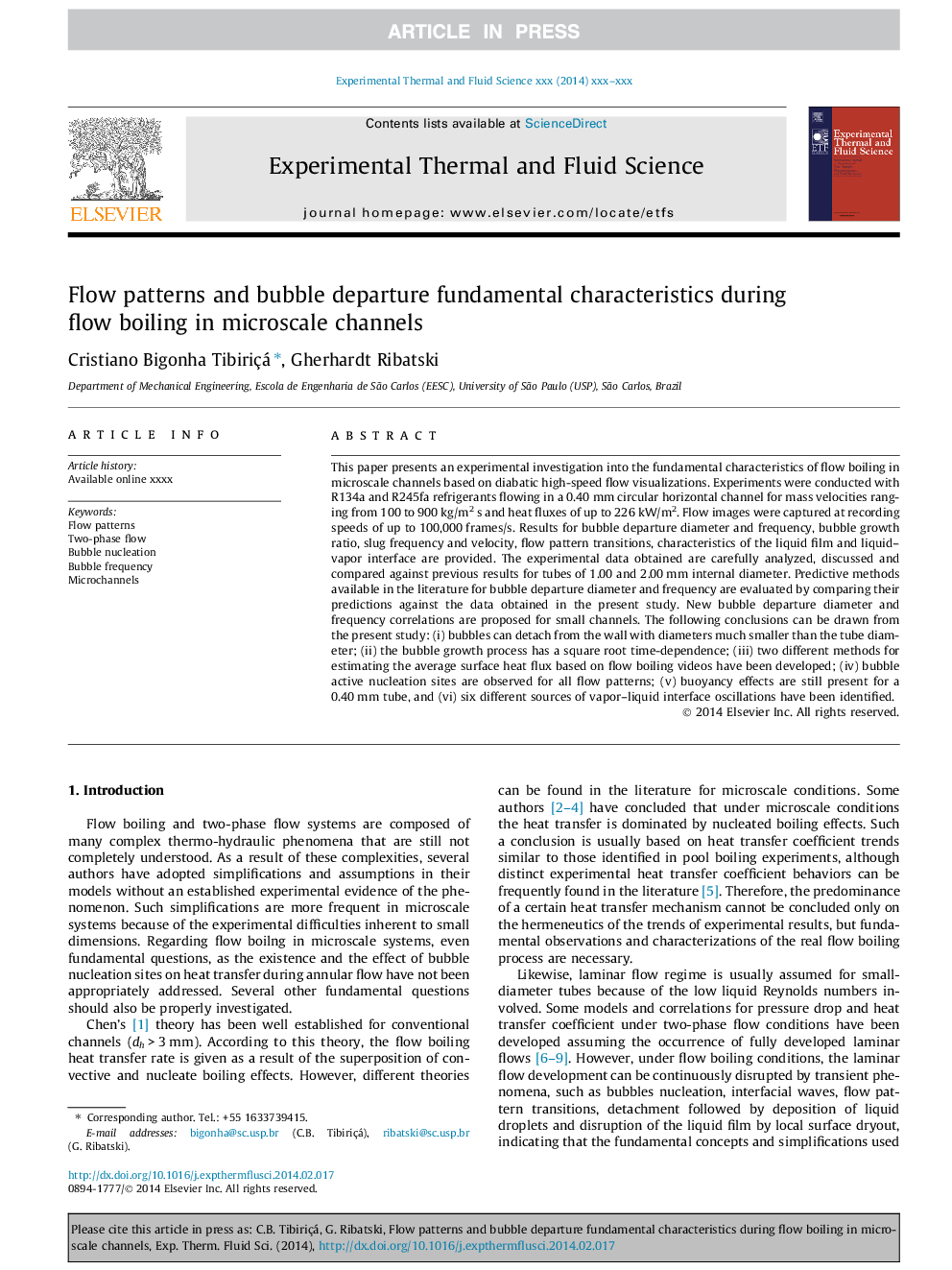| Article ID | Journal | Published Year | Pages | File Type |
|---|---|---|---|---|
| 7052446 | Experimental Thermal and Fluid Science | 2014 | 14 Pages |
Abstract
This paper presents an experimental investigation into the fundamental characteristics of flow boiling in microscale channels based on diabatic high-speed flow visualizations. Experiments were conducted with R134a and R245fa refrigerants flowing in a 0.40Â mm circular horizontal channel for mass velocities ranging from 100 to 900Â kg/m2Â s and heat fluxes of up to 226Â kW/m2. Flow images were captured at recording speeds of up to 100,000Â frames/s. Results for bubble departure diameter and frequency, bubble growth ratio, slug frequency and velocity, flow pattern transitions, characteristics of the liquid film and liquid-vapor interface are provided. The experimental data obtained are carefully analyzed, discussed and compared against previous results for tubes of 1.00 and 2.00Â mm internal diameter. Predictive methods available in the literature for bubble departure diameter and frequency are evaluated by comparing their predictions against the data obtained in the present study. New bubble departure diameter and frequency correlations are proposed for small channels. The following conclusions can be drawn from the present study: (i) bubbles can detach from the wall with diameters much smaller than the tube diameter; (ii) the bubble growth process has a square root time-dependence; (iii) two different methods for estimating the average surface heat flux based on flow boiling videos have been developed; (iv) bubble active nucleation sites are observed for all flow patterns; (v) buoyancy effects are still present for a 0.40Â mm tube, and (vi) six different sources of vapor-liquid interface oscillations have been identified.
Related Topics
Physical Sciences and Engineering
Chemical Engineering
Fluid Flow and Transfer Processes
Authors
Cristiano Bigonha Tibiriçá, Gherhardt Ribatski,
